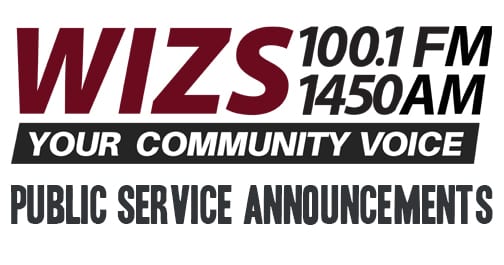100.1 FM ~ 1450 AM ~ WIZS, Your Community Voice ~ Click to LISTEN LOCAL
-Press Release, Henderson-Vance County Emergency Operations
With June 1 came the official beginning of the 2020 Atlantic hurricane season, which lasts until November 30.
Already, we have had an active season with three (3) named storms, and with the forecast projections for this year, we could definitely be in for a busy season.
The National Oceanic and Atmospheric Administration (NOAA) is forecasting an above-normal season in terms of the number of storms.
The Atlantic Basin Seasonal Hurricane Forecast for 2020
Number of Named Storms: 13-19
Number of Hurricanes: 6-10
Number of Major Hurricanes (Category 3 or higher): 3-6
The Vance County Office of Emergency Operations wants to make sure that you and your family are prepared for whatever this season brings our way. The time to prepare is now, well out in front of peak hurricane season. Keep in
mind that communities and individuals are expected to be self-sufficient for a minimum of 72 hours (3 days) following the impact of a hurricane.
“If the impact is severe enough, it may potentially take outside help three (3) days to get here,” Short said. “By taking the time to gather up a few basic necessities now, you will enable your family to weather the storm and the aftermath until help can arrive.”
For more information about how you and your family can prepare for severe weather, visit the National Weather Service website: http://www.weather.gov/rah or visit our state site for emergency information including severe weather preparedness: https://readync.org/EN/Index.html
2020 Tropical Storm Names for the Atlantic Region
Arthur, Bertha, Cristobal, Dolly, Edouard, Fay, Gonzalo, Hanna, Isaias, Josephine, Kyle, Laura, Marco, Nana, Omar, Paulette, Rene, Sally, Teddy, Vicky and Wilfred
Recommended Family Preparedness Items
The best time to assemble a three-day emergency supplies kit is well before you will ever need it. Most people already have these items around the house, and it is a matter of assembling them now before an evacuation or State of Emergency order is issued.
Start with an easy to carry, watertight container – a large plastic trash can will do, or line a sturdy cardboard box with a couple of trash bags. Next, gather up the following items and place them in your kit:
Essentials
Water – 1 gallon per person per day (a week’s supply of water is preferable)
Water purification kit or bleach
First aid kit and first aid book
Pre-cooked, non-perishable foods, such as canned meats, granola bars, instant soup & cereals, etc.
Baby supplies: formula, bottle, pacifier, soap, baby powder, clothing, blankets, baby wipes, disposable diapers, canned food and juices
Non-electric can opener
Anti-bacterial hand wipes or gel
Blanket or sleeping bag per person
Portable radio or portable TV and extra batteries
Flashlight and extra batteries
Essential medications
Extra pair of eyeglasses
Extra house and car keys
Fire extinguisher – ABC-type
Food, water, leash and carrier for pets
Cash and change
Seasonal change of clothing, including sturdy shoes
Please remember your pets
Sanitation Supplies
Large plastic trash bags for waste, tarps and rain ponchos
Large trash cans
Bar soap and liquid detergent
Shampoo, toothpaste and toothbrushes
Feminine hygiene supplies
Toilet paper
Household bleach
Rubber gloves
Stocking up now on emergency supplies can add to your family’s safety and comfort during and after a disaster. Store enough supplies for at least three days, preferably seven days, in one place.



















